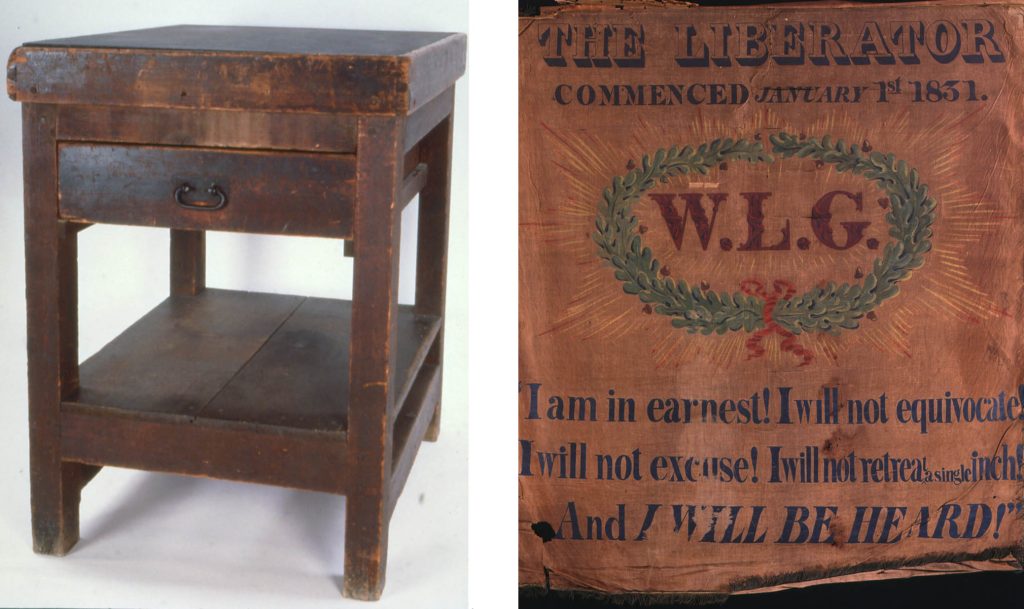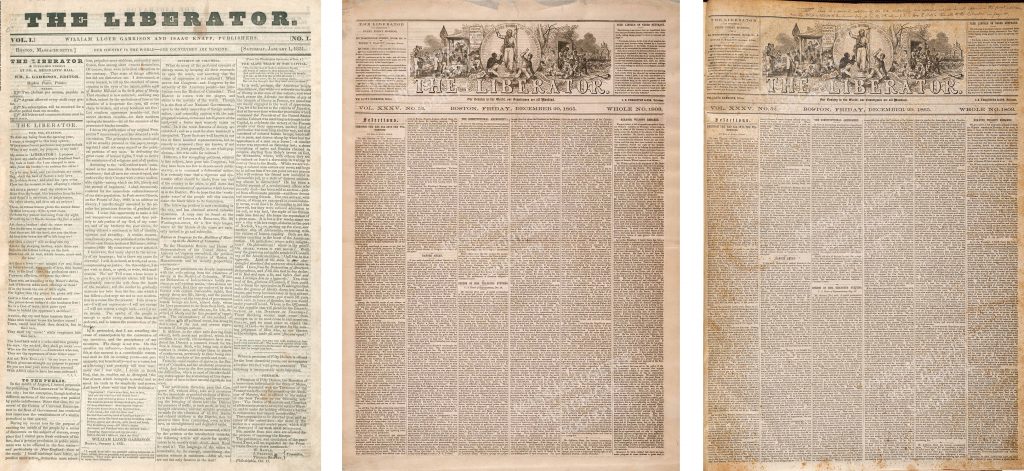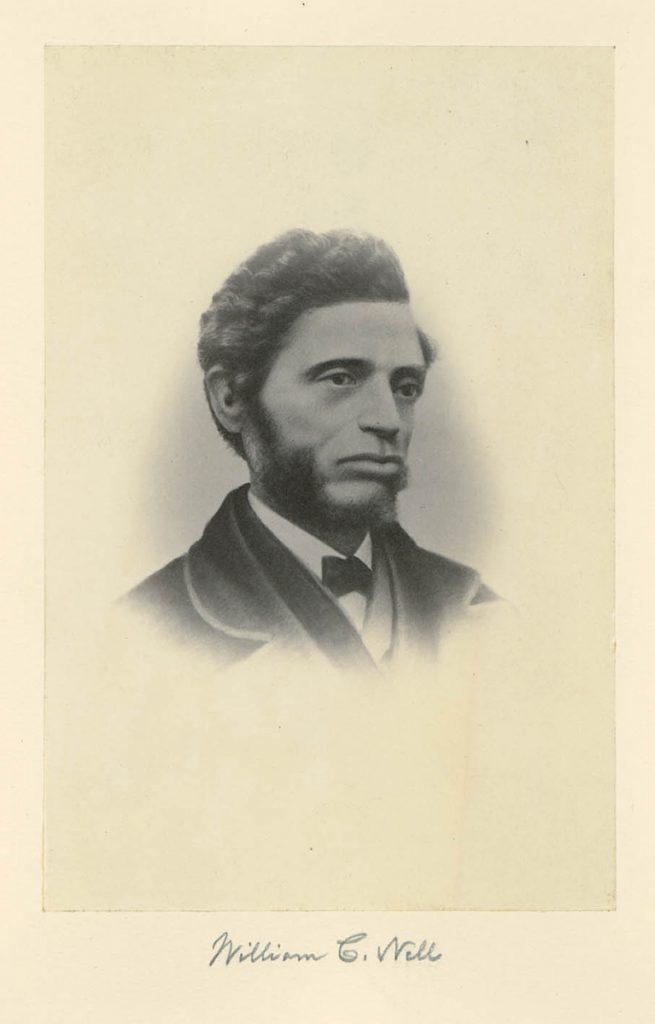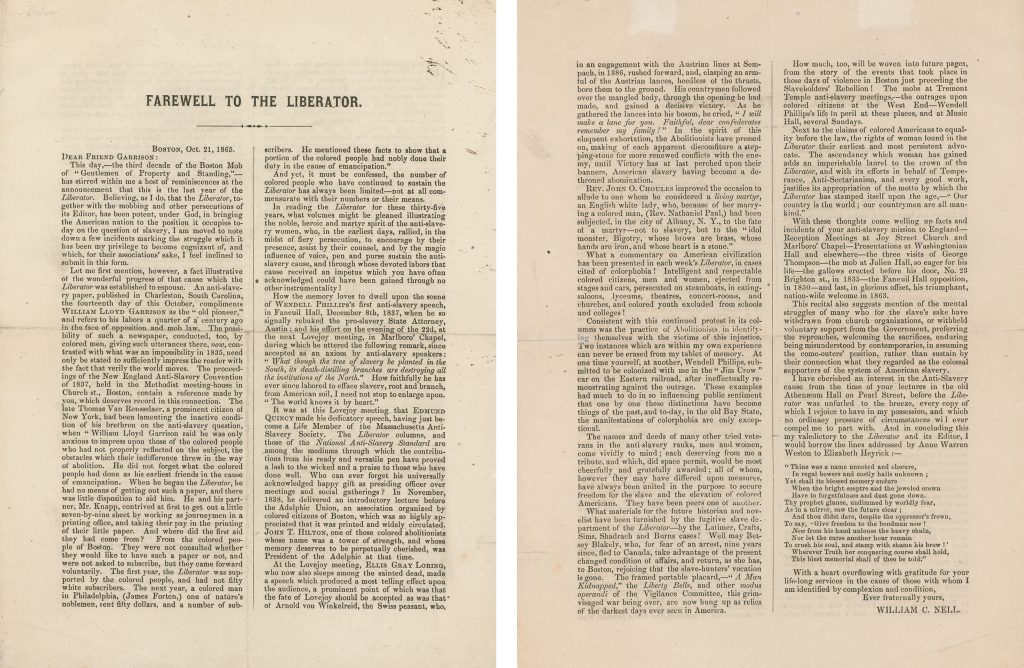By Heather Rockwood, Communications Associate
William Lloyd Garrison was brutally attacked in Boston on 21 October 1835 while speaking at a meeting of the Female Anti-Slavery Society. You can read more about the attack and how eyewitness stories differed in a previous Beehive blog post.
Garrison, a Boston journalist, abolitionist, and social reformer, was most famous for his widely read antislavery newspaper, The Liberator. The Boston paper began in 1831 and ceased publication when enslavement in the United States was constitutionally abolished in 1865. The MHS has several items relating to The Liberator, including the stand on which Garrison set the type for printing, a banner to celebrate the beginning of The Liberator, and several issues of The Liberator, including the first issue, and the first and second editions of the last issue.


In the last edition of The Liberator on the last two pages is a Farewell Address to the paper, written by William Cooper Nell, an educated post-office employee, author, and abolitionist in the Boston African American community. He created antislavery societies and was a friend, supporter, and article writer for Garrison and his Liberator. Nell worked to desegregate antislavery societies and schools in Boston. He achieved the latter in 1855.

Nell’s “Farewell Address” in The Liberator, was addressed to his “Dear Friend Garrison.” It is both a love letter and, at times, a chastisement towards white abolitionists, as seen in these passages: “The first year, the Liberator was supported by the colored people, and had not fifty white subscribers,” and “In reading the Liberator for these thirty-five years, what volumes might be gleaned illustrating the noble, heroic and martyr spirit of the anti-slavery women, who, in the earliest days, rallied, in the midst of fiery persecution, to encourage by their presence, assist by their counsel, and by the magic influence of voice, pen and purse sustain the anti-slavery cause, and through whose devoted labors that cause received an impetus which you have often acknowledged could have been gained through no other instrumentality!”

At the end, Nell shows deep feeling, “I have cherished an interest in the Anti-Slavery cause from the time of your lectures in the old Athenaeum Hall on Pearl Street, before the Liberator was unfurled to the breeze, every copy of which I rejoice to have in my possession, and which no ordinary pressure of circumstances will ever compel me to part with.” His address finishes with a poem by Anne Warren Weston, and his own heart-felt thanks: “With a heart overflowing with gratitude for your life-long services in the cause of those with whom I am identified by complexion and condition, Ever fraternally yours, William C. Nell.”

